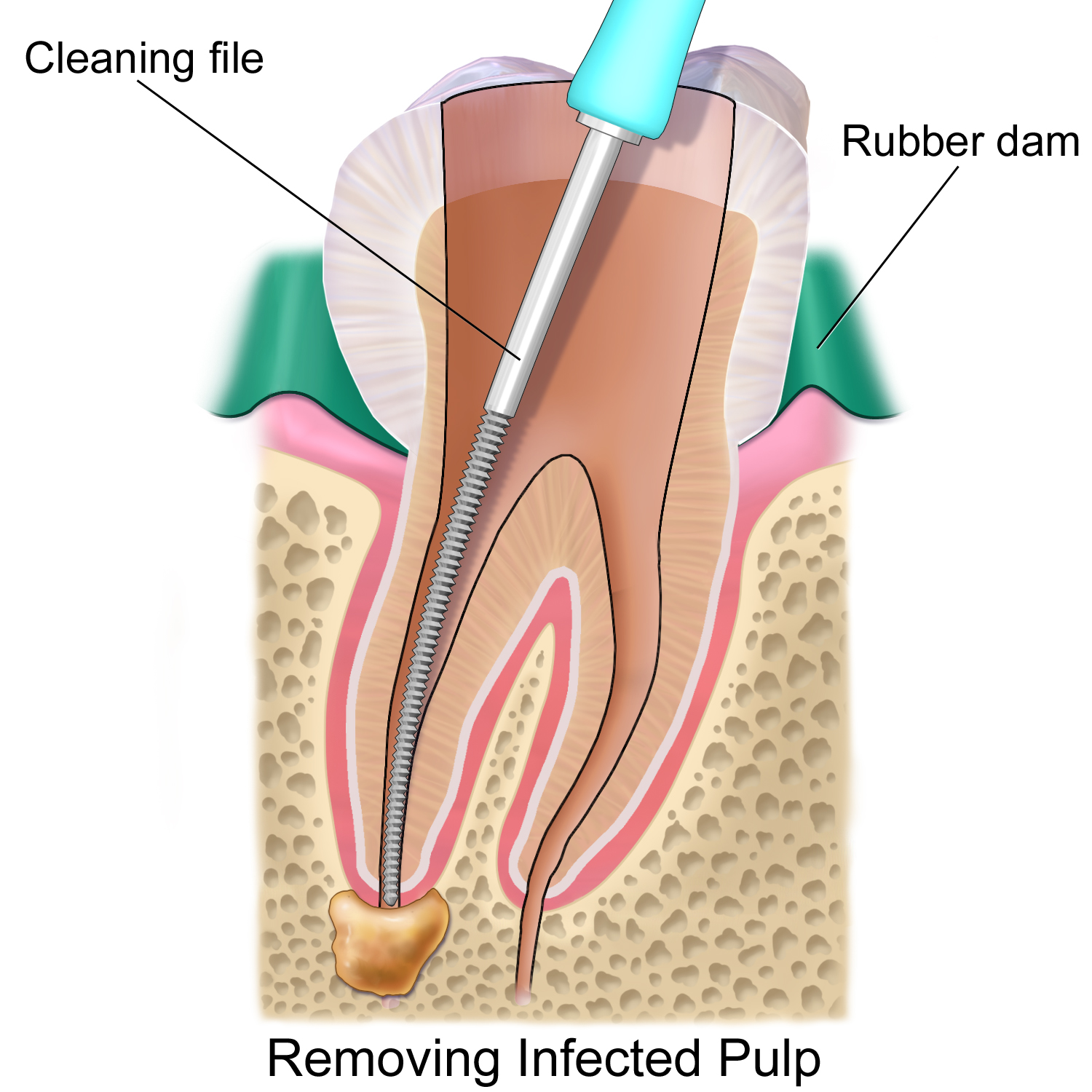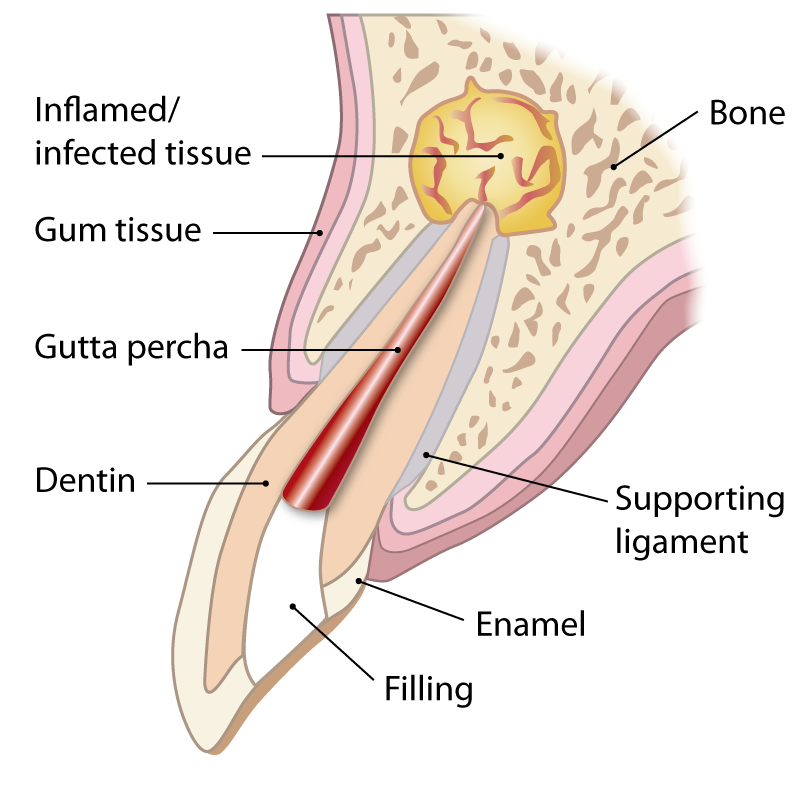A wide range of
Procedures
Root Canal Treatment
Root canal treatment is a straightforward procedure to relieve dental pain and save your teeth. Patients typically need a root canal when there is inflammation or infection in the roots of a tooth. Endodontist who specializes in such treatment carefully removes the pulp inside the tooth, cleans, disinfects and shapes the root canals, and places a filling to seal the space.
Endodontic Retreatment
Teeth that have root canal treatment have the potential to heal improperly. It can become diseased for months or even years after the treatment. If this happens, you will need a second chance to save your tooth with retreatment. This additional procedure maybe helps to diminish dental pain or discomfort and promote healing.
Endodontic Surgery
Endodontic surgery can be used to locate small fractures or hidden canals previously undetected on X-rays during the initial treatment. Surgery can help remove calcium deposits in root canals or to treat damaged root surfaces or the surrounding bone of the tooth.
Traumatic Dental Injuries
If you have an accident that causes your tooth to fracture or come out of the socket please contact us immediately. If the tooth is avulsed (the whole tooth with root came out of the socket) you should rinse with water and try to put it back in the socket. If that’s not possible please keep the avulsed tooth in milk, saline, or coconut water and contact us immediately.
Dental implants
Dental implants are artificial tooth roots that provide a permanent base for fixed, replacement teeth. Compared to dentures, bridges, and crowns, dental implants are a popular and effective long-term solution for people who suffer from missing teeth, failing teeth or chronic dental problems. Because they fit. feel, and function like natural teeth, dental implants are quickly becoming a new standard in tooth replacement.
Other Treatment Options
Endodontists can often save even the most severely injured teeth, so it pays to learn more about your treatment options. Do everything possible to save your teeth before considering extraction – always the last resort!
Post-Operative Care
Post-Operative Instructions for Root Canal

- Once your endodontic treatment is complete, please wait to eat or drink on the affected side while you are still numb. You may floss and brush your teeth as normal, unless told otherwise by the doctor.
- It is normal for your tooth to be sore for 2-3 days after treatment. It may actually become more sore on the second day. Tenderness to biting may persist for up to two weeks following treatment but will gradually get better over time.
- Generally, Ibuprofen (Advil or Motrin) is all that is needed for post-operative soreness. We strongly recommend that you take 600mg (three over-the-counter 200mg tablets) of Ibuprofen every six hours for two days, unless you have an allergy or sensitivity to Ibuprofen. At this dosage Ibuprofen has excellent anti-inflammatory properties. It’s a good idea to take the Ibuprofen even if the tooth is not sore to help prevent soreness in the next few days.
- Your tooth only has a temporary filling at this time. Avoid chewing on the treated tooth until the permanent restoration is placed.
- If antibiotics have been prescribed, it’s important that you take them for the full length of time indicated on the prescription, even if all signs of infection are gone.
- If you have any persistent discomfort or swelling, please contact our office right away.
Post-Operative Instructions for Apicoectomy

- Do not spit. Use a tissue to wipe your mouth as needed, or swallow your saliva.
- Do not use a drinking straw. Drink straight from the cup. Do not smoke.
- Keep fingers and tongue away from the surgical area. Spitting, the use of a straw, smoking, and poking can dislodge the blood clot that is forming, and will cause bleeding from the area. Also, smoking can increase the chances of an infection.
FOR BLEEDING: Some minor bleeding is expected after apicoectomy. It will usually subside quickly, and stop within an hour or two after surgery. A little oozing is normal and may persist for several hours. 1) Keep gauze on the surgical area with some pressure for 30 to 45 minutes. 2) Remove the gauze after 30 to 45 minutes, and replace it with a new piece of gauze if you are still bleeding. It is important to make sure the gauze is directly on the surgical site. Firm pressure for another hour should stop the bleeding. 3) If you find that this is not working after your third attempt, use a moistened tea bag instead of the gauze. The tannic acid in tea will help to form a clot, and stop the bleeding. 4) If all else fails, call the office.
FOR SWELLING: Most patients will experience some swelling after surgery in the mouth. It may be mild or severe, and is different for every patient. The swelling will get bigger for the first 24 to 48 hours before it starts to go away. It may last for several days to one week. 1) Use an ice pack on the cheek or face next to the surgical site. Keep it on for 15 to 20 minutes, then off for 10 minutes, and repeat until you go to sleep. Start again the next day. 2) Sleep with you head elevated slightly, above the heart. This will keep swelling down. 3) On the third day, change to moist heat instead of ice packs. This will bring the swelling down quicker.
EATING: You may eat soft foods as soon as the anesthetic wears off. Try not to chew directly on the surgical site. You may resume a regular diet as soon as you feel up to it. Please stay well nourished, and well hydrated, you will heal faster.
BRUSHING: You may brush your teeth, avoiding the surgical area, either tonight, or tomorrow morning. Be gentle, and do not spit or rinse forcefully. Start brushing the surgical area on the second day, and be very gentle on the stitches.
RINSING: You may start rinsing today, gently, with some warm salty water every few hours. Do not use alcohol-containing mouth-rinses for a few days.
MEDICATIONS: You were probably given one or more prescriptions for medications. Take all medications with a full glass of water, and as directed on the bottle. Call us if you experience severe nausea, or diarrhea, or cannot swallow your pills. 1) Antibiotics: Continue until the bottle is empty — Do not quit halfway. 2) Pain Medicine: Continue as necessary. Remember that narcotics can make you drowsy, so no driving, operating machinery, or alcoholic beverages while you are taking them.


